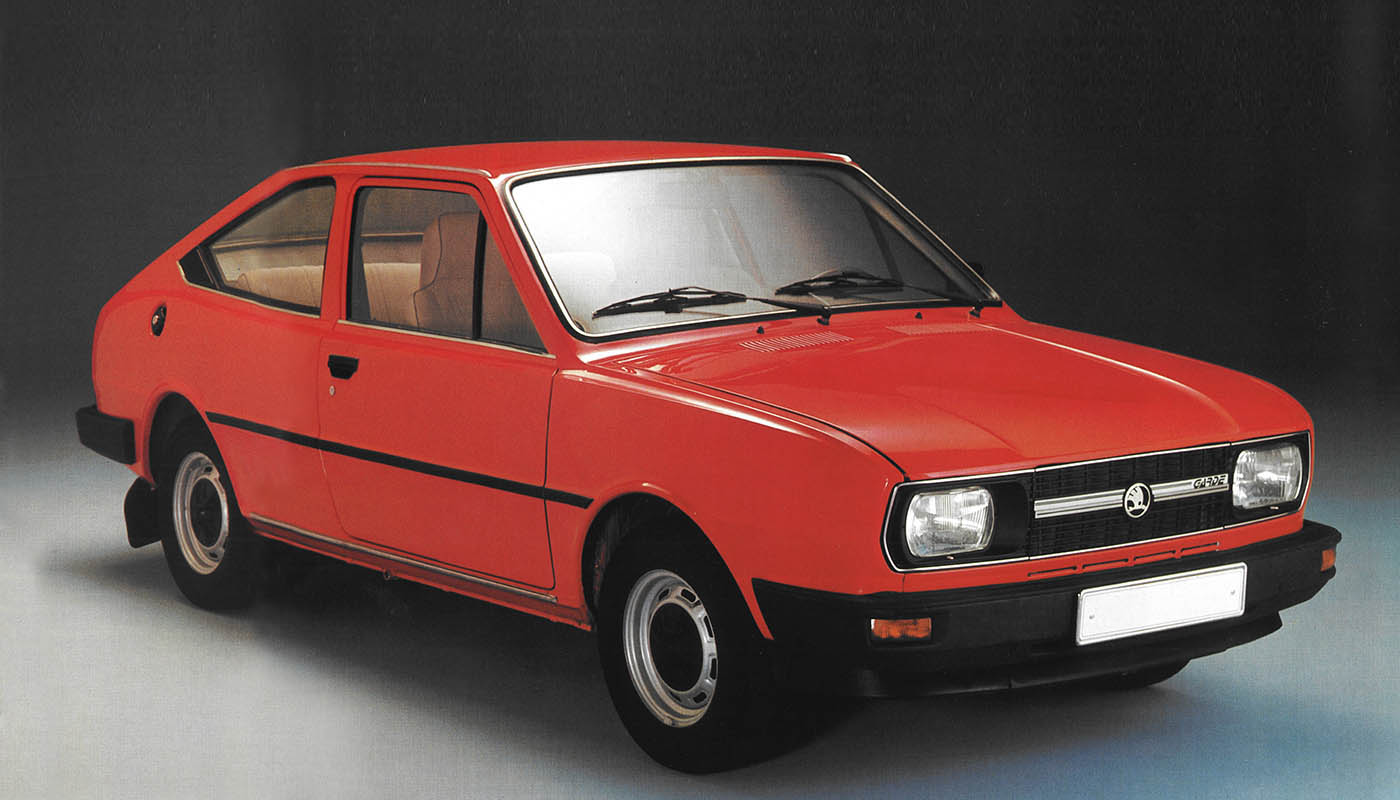The Slovak era
At the turn of the 1970s and 1980s, the development department of the Bratislava Automobile Works (Bratislavské automobilové závody, or BAZ), founded on 1 July 1971, had almost four hundred employees. In addition to cooperating with domestic brands, the company had also been planning licensed production of foreign sports cars in Slovakia. Eight units of the Alfa Romeo Giulia, for example, underwent intensive testing here. In March 1980, the directors of BAZ and ŠKODA signed a contract for the annual production of 80,000 ŠKODA saloons and 17,000 coupés in the Slovak capital every year.
 One striking modernised feature on the GARDE was its angular tail lights.
One striking modernised feature on the GARDE was its angular tail lights.
On Friday, 30 April 1982, ŠKODA car production started in Děvínská Nová Ves, on the northwest outskirts of Bratislava, although for propaganda reasons the date of May 1, Labour Day, was featured in the period photograph. The main production article was the GARDE coupé, as manufacture in Bratislava had been reckoned with from the development phase – the original plan had been that the model would be produced in Kvasiny and Bratislava at the same time.
This original plan was delayed, though, and Bratislava did not get its GARDE until several months later. Despite the huge state investment, however, the average speed of GARDE production was just one and a half cars a day, resulting in only one thousand coupés made in the first twenty months. Around three and a half thousand GARDE units were built at BAZ in the course of three years. That is dramatically less than the originally planned 17,000 per year – and the contemplated 80,000 sedans never materialised at all!
 ŠKODA GARDE
ŠKODA GARDE
In addition to finished GARDE cars, axles and other components for ŠKODA cars and other domestic brands were made in Bratislava. Some prototypes were also developed here, but none made it into series production. The Locusta coupé, for example, was based on the GARDE model, but with a 70 mm longer wheelbase. A number of other BAZ projects for passenger cars and light commercial vehicles based on rear-engined ŠKODA models never got off the ground.
We should add that the GARDE gave way to the ŠKODA RAPID coupé, unveiled in September 1984. Their production history was the same: first in Kvasiny and later transferred – though this time only partially – to Bratislava.



































